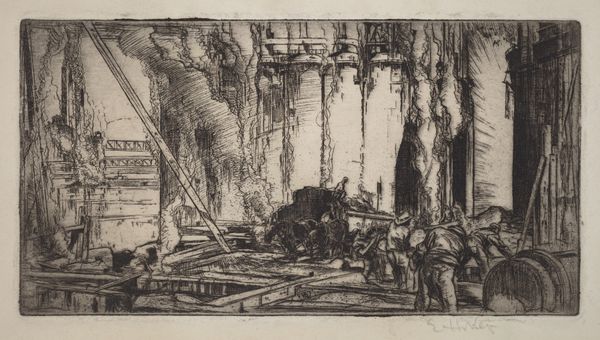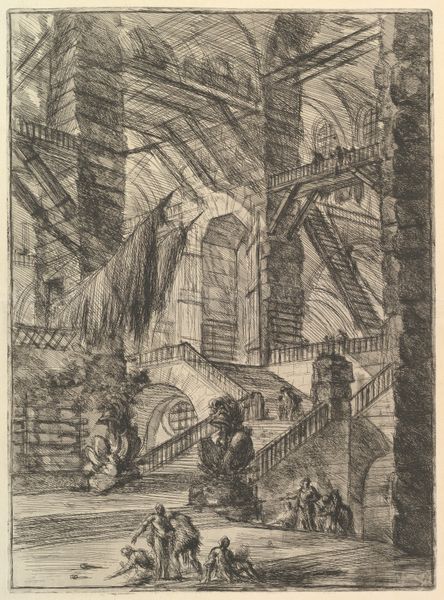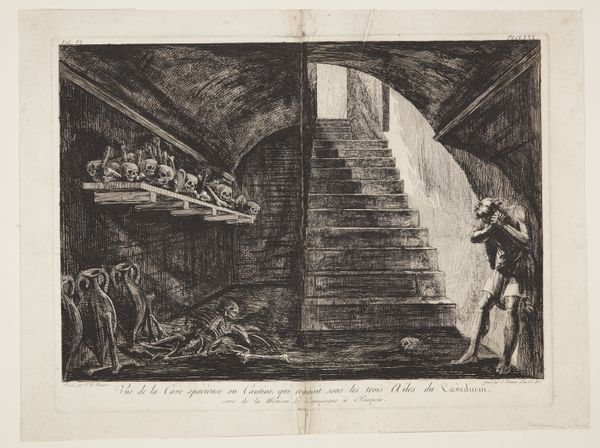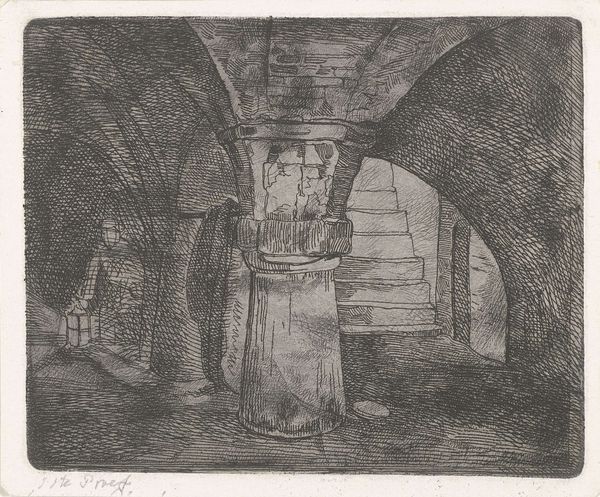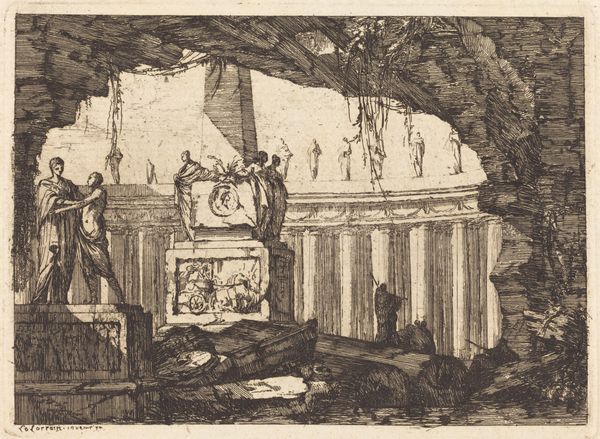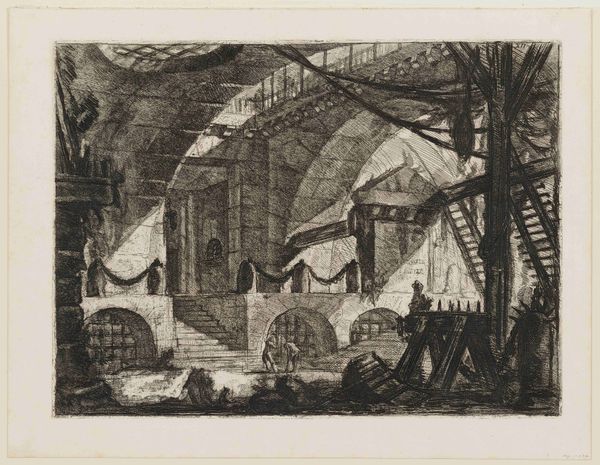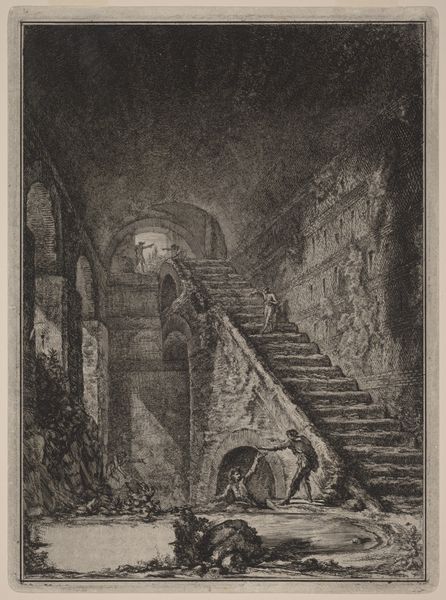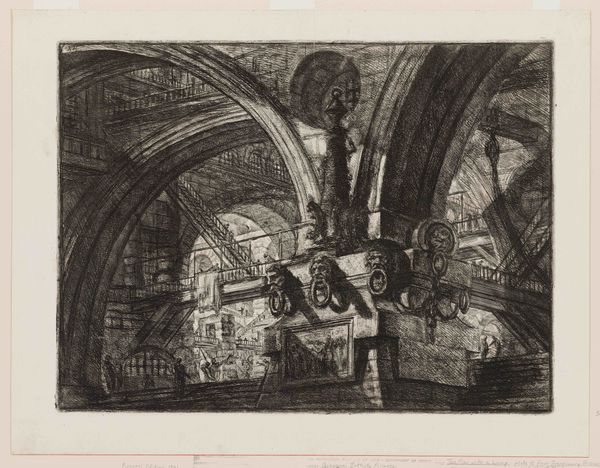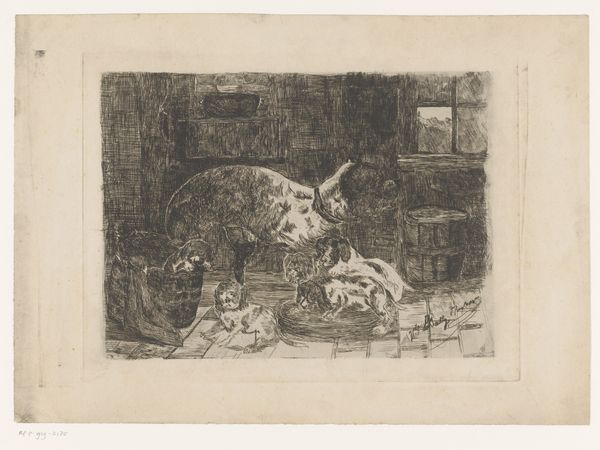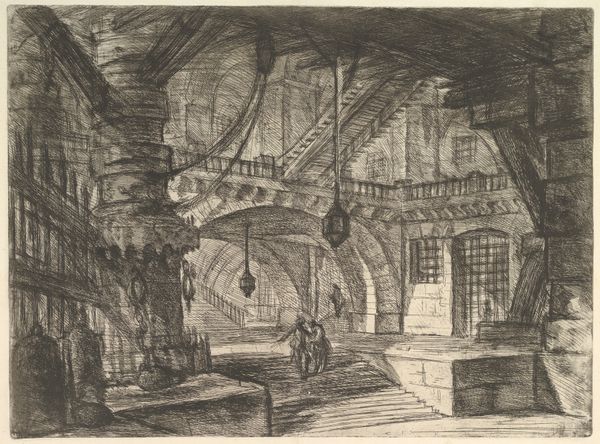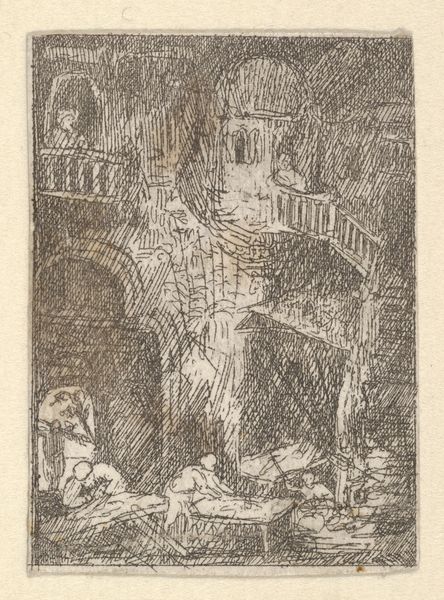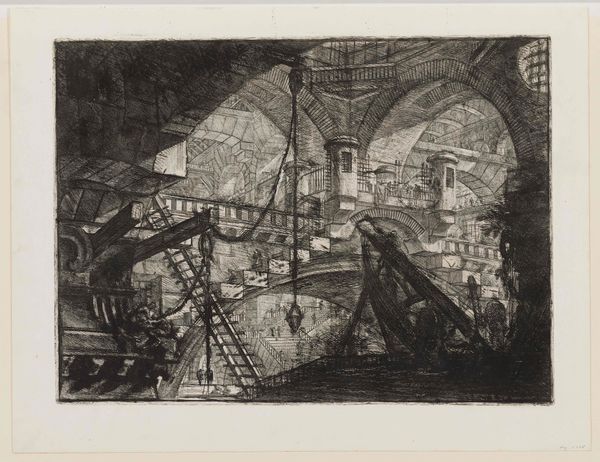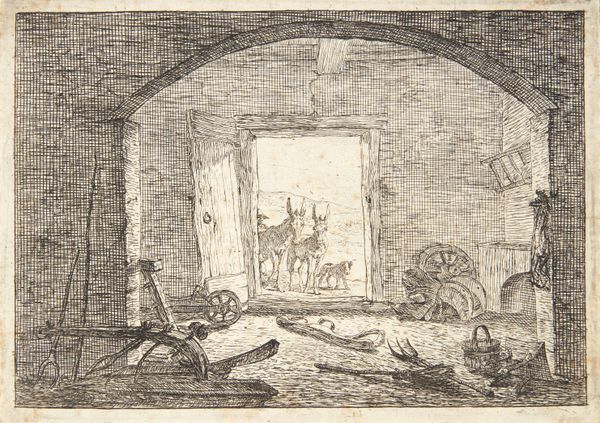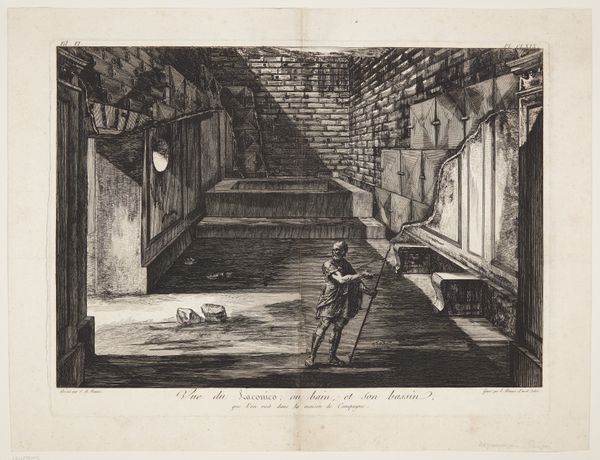
drawing, print, etching, engraving
#
drawing
#
narrative-art
# print
#
etching
#
figuration
#
form
#
romanticism
#
line
#
history-painting
#
academic-art
#
engraving
Dimensions: Image: 15 1/4 × 21 15/16 in. (38.7 × 55.7 cm) Sheet (trimmed within platemark): 16 3/16 × 22 5/8 in. (41.1 × 57.4 cm)
Copyright: Public Domain
Curator: So, here we have "Prison Scene," an etching by Francesco Piranesi, likely created between 1770 and 1810. What strikes you about it? Editor: A certain… foreboding. It’s not just the skeletons, though there’s quite a collection of them—it's the scale and contrast of everything. Tiny, huddled figures against this massive architecture. It whispers of doom, doesn't it? Curator: It speaks to Piranesi’s preoccupation with Roman antiquity, but twisted through his own lens. Consider the means of production—etching, engraving—reproducing on paper images of prisons and tombs, architectures of power and death. This allowed wide circulation, making the private agonies represented here almost public. Editor: So it becomes this commercially available… trauma? But beyond the print as object, the lines themselves! Etching has such potential for texture, but here it’s all these harsh, almost frantic, scratches. It really amps up the unease. Tell me, where was this initially acquired? Curator: The work resides in the collection of the Metropolitan Museum of Art. The question of who initially commissioned or purchased it brings up interesting class and cultural dynamics, but the more crucial question is its technique of broad dissemination across geographic and economic strata. Think about the consumption patterns here. Editor: I am thinking about how those bones perched up high look like they’re heckling that poor, terrified man. He seems trapped, literally cornered by mortality. He probably cannot afford any prints! How's he going to consume the trauma of a picture when he is in it? I feel deeply for his torment. Curator: Yes, the personal interpretation is understandable. Yet this print allows many individuals access to the images of confinement initially intended only for elite audiences. It exposes systems, even while aestheticizing suffering. This tension between art and its subject interests me greatly. Editor: I’ll say! For me, the tension sits right in my gut. That staircase to nowhere just *begs* for some light, for an escape from this subterranean nightmare. It’s a cruel trick of perspective, all these heavy stone blocks practically screaming hopelessness. Well, I'll take my doom with an expresso, if you do not mind. Thank you, this has been enlightening!
Comments
No comments
Be the first to comment and join the conversation on the ultimate creative platform.
